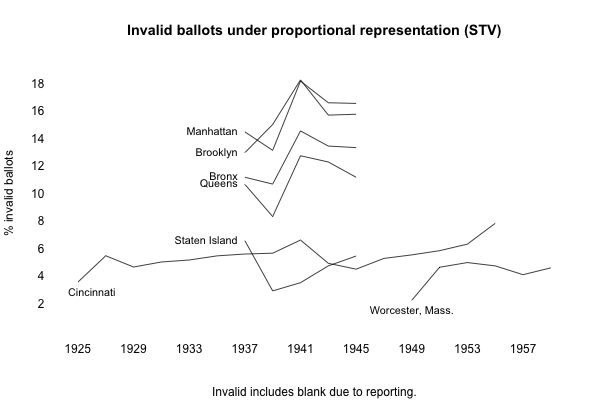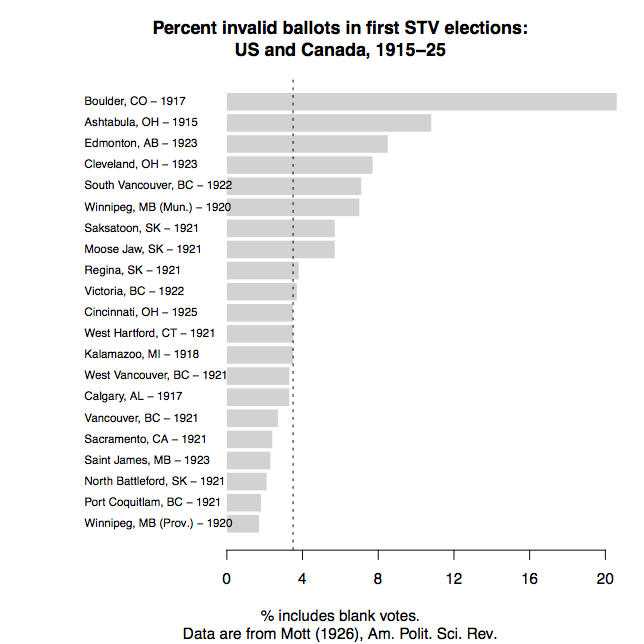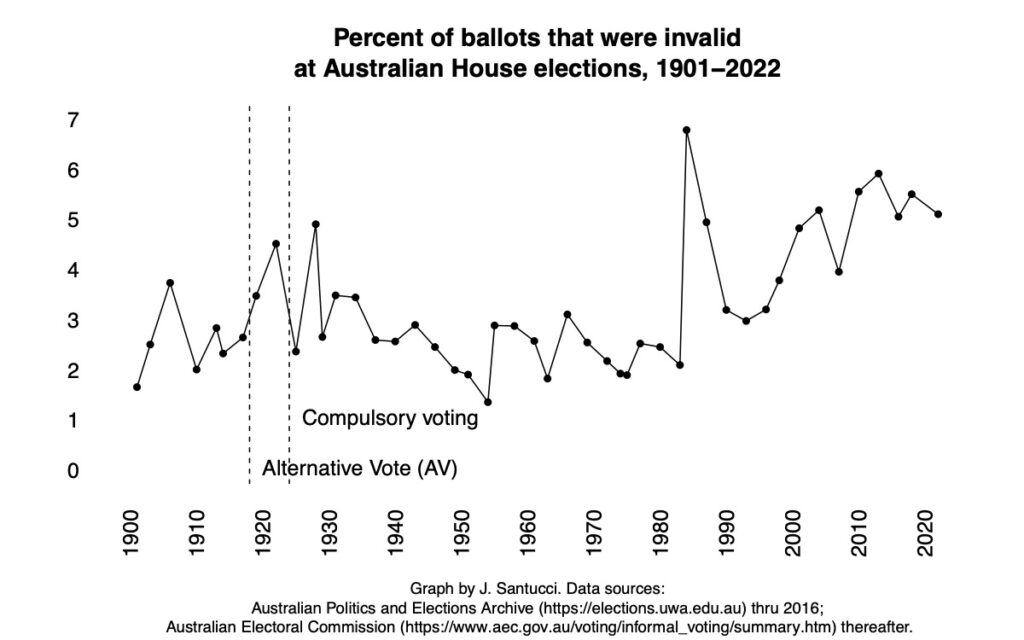Nearly three years ago, I had a long-ish post on the “voter confusion” question in ranked-choice elections. The core point was that invalid-ballot rates seemed to surge when movement-type people ran for office. Presumably, they were mobilizing the sorts of voters who either hadn’t voted before in an RCV election, or had the sort of socioeconomic profile that one might associate with ballot error.
The new insight is “X voting.” This is an old term for when people use the letter X to mark an RCV ballot. As you can see from my sample ballots, it seems to have been a big problem. The very first instruction on these ballots is: “DO NOT USE X MARKS.”
Rates of invalid voting in New York City were staggering. In Brooklyn and Manhattan in 1941, for example, the invalid rates approached 20 percent. About one quarter of that came from blank ballots. (Data on blank ballots do not exist after 1941.) Here is the graphic from the original post:

Here’s how we know that voters were using multiple X marks. The rules were very inclusive. If you voted with just one X, that was taken as your first-place ranking, and the ballot counted as such. If you voted with a combination of X’s and numbers, the X’s were disregarded. So, for a ballot to be invalid, it had to contain only X’s, and more than one of them. More on that from this tweet thread.
The city could have stopped all this by moving to IBM’s STV voting machine. There are references to this machine in the 1937 city charter, in fact, so people were aware of the problem and intended to solve it. I am not sure why the solution never came.
Here are more invalid rates from very early STV elections, both in the U.S. and Canada. Some are alarmingly high. We also see that they tended to decline as there was more public experience with STV. Something must have improved — voter education, ballot designs, party coordination, whatever. The data come from Mott (1926).

Aside from using a voting machine that does not permit X voting, reformers could have promoted Gosnell’s “list system with single candidate preference” — otherwise known as open-list proportional representation (OLPR). I don’t have the statistics handy, but I think that versions of this are the most common type of PR in countries without mixed-member systems.
Gosnell called for a “single candidate preference” because reformers at the time were intellectually committed to the single transferable vote — “if your vote doesn’t count for your first choice, it counts instead for your second,” and so on. But Gosnell’s OLPR system could have worked with multiple votes too — the sort of X voting that drove up these error rates. It also could have been made to work with multiple votes across different party lists (i.e., ticket-splitting).
Final thought: I do not want to suggest that RCV is a bad idea, destined to generate mass confusion and disenfranchisement. We do not live in 1941, and no American voter is asked to mark RCV ballots with a pencil anymore. (Although, if we must have PR, I am starting to prefer open lists.)
A related issue is that we do not know what ballot invalidity is like in non-RCV races, especially when voters are asked to express more than one preference. I am thinking here of at-large elections. Studies of that are pretty rare, and we need more of them. One such study is this.


